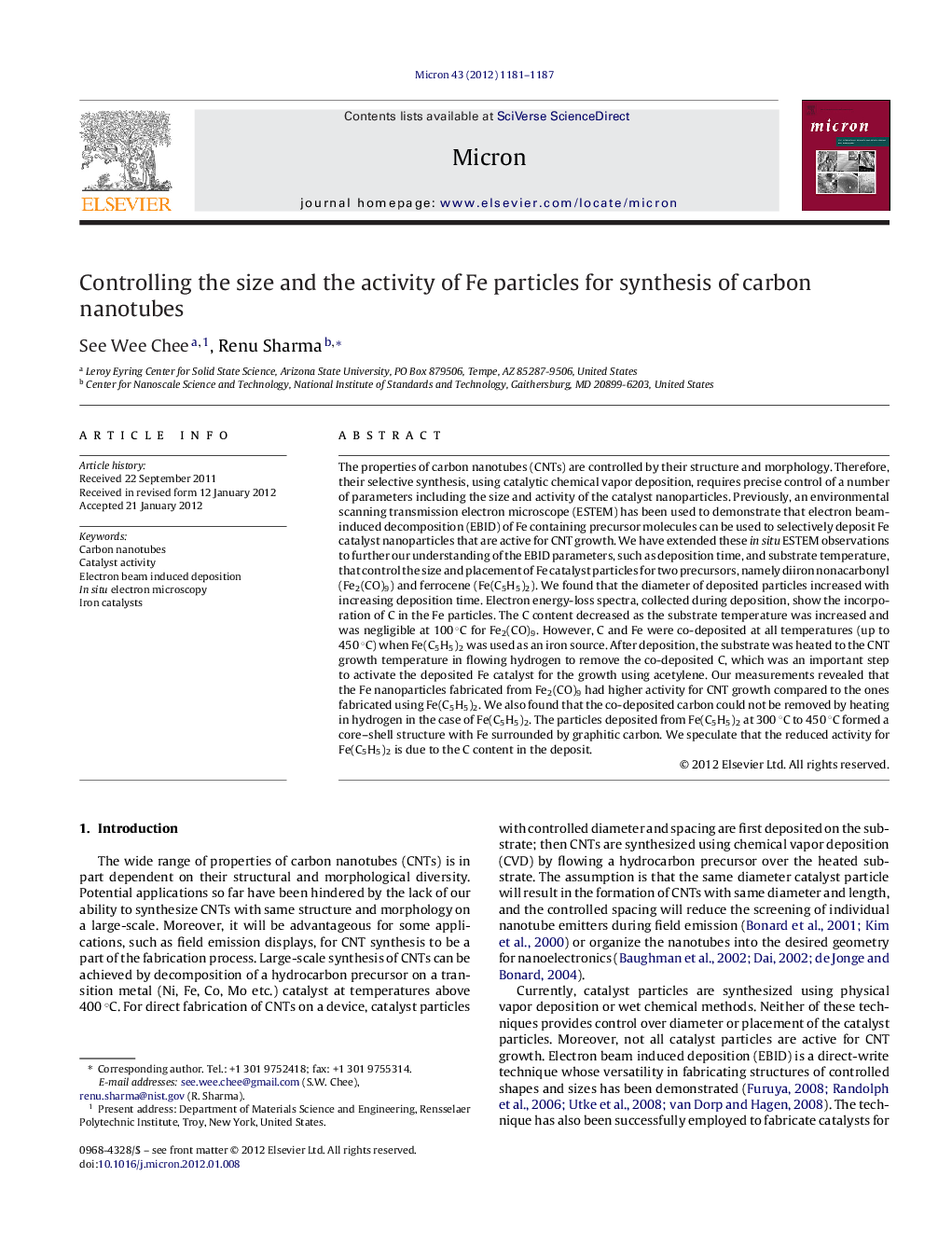| کد مقاله | کد نشریه | سال انتشار | مقاله انگلیسی | نسخه تمام متن |
|---|---|---|---|---|
| 1589162 | 1001975 | 2012 | 7 صفحه PDF | دانلود رایگان |

The properties of carbon nanotubes (CNTs) are controlled by their structure and morphology. Therefore, their selective synthesis, using catalytic chemical vapor deposition, requires precise control of a number of parameters including the size and activity of the catalyst nanoparticles. Previously, an environmental scanning transmission electron microscope (ESTEM) has been used to demonstrate that electron beam-induced decomposition (EBID) of Fe containing precursor molecules can be used to selectively deposit Fe catalyst nanoparticles that are active for CNT growth. We have extended these in situ ESTEM observations to further our understanding of the EBID parameters, such as deposition time, and substrate temperature, that control the size and placement of Fe catalyst particles for two precursors, namely diiron nonacarbonyl (Fe2(CO)9) and ferrocene (Fe(C5H5)2). We found that the diameter of deposited particles increased with increasing deposition time. Electron energy-loss spectra, collected during deposition, show the incorporation of C in the Fe particles. The C content decreased as the substrate temperature was increased and was negligible at 100 °C for Fe2(CO)9. However, C and Fe were co-deposited at all temperatures (up to 450 °C) when Fe(C5H5)2 was used as an iron source. After deposition, the substrate was heated to the CNT growth temperature in flowing hydrogen to remove the co-deposited C, which was an important step to activate the deposited Fe catalyst for the growth using acetylene. Our measurements revealed that the Fe nanoparticles fabricated from Fe2(CO)9 had higher activity for CNT growth compared to the ones fabricated using Fe(C5H5)2. We also found that the co-deposited carbon could not be removed by heating in hydrogen in the case of Fe(C5H5)2. The particles deposited from Fe(C5H5)2 at 300 °C to 450 °C formed a core–shell structure with Fe surrounded by graphitic carbon. We speculate that the reduced activity for Fe(C5H5)2 is due to the C content in the deposit.
► We fabricated Fe catalysts for CNT growth using EBID with Fe2(CO)9 and Fe(C5H5)2.
► Electron beam location and dwell time controlled catalyst position and diameter.
► Catalysts from Fe2(CO)9 had less carbon than catalysts from Fe(C5H5)2.
► More catalysts from Fe2(CO)9 grew nanotubes compared to catalysts from Fe(C5H5)2.
► Co-deposited carbon reduces catalyst activity and must be removed during or post-deposition.
Journal: Micron - Volume 43, Issue 11, November 2012, Pages 1181–1187